- Home
- > Nature online
- > Earth
- > The oceans
- > The deep ocean
- > Deep sea fishes
Primary navigation
Fishes of the deep sea
The deep sea is cold, dark and under enormous pressure and the fishes that live there have adapted in strange and wonderful ways to this environment.
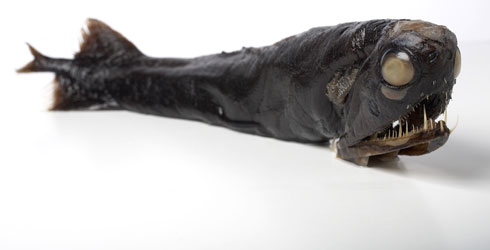
Stoplight loosejaw, Malacosteus niger
Depth: 500m - 1km
Many deep sea creatures give out blue light, called bioluminescence, but the stoplight loosejaw is unusual as it emits red light as well. This is invisible to both its prey and its predators, and probably acts like a torch, to search out shrimps and small fishes. It may also be used to communicate with other stoplight loosejaws.
Watch a video and discover more about the stoplight loosejaw
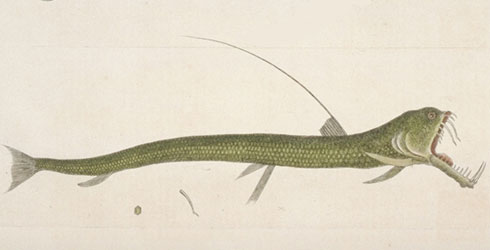
Viper fish
Depth: 400m - 2.8km
The viper fish has fangs so big that its mouth can't close over them. Instead, they slide up the front of its face when it shuts its mouth. It can completely dislocate its lower jaw, allowing it to reach out and grab large fish and crustaceans.

Spotted lantern fish, Myctophum punctatum
Depth: 50m - 1km
The lantern fish is common all over the world and has distinctive patterns of light organs on its sides, perhaps so it can recognise other lantern fish. It can also produce bright flashes from near its tail, which could be used to blind predators or perhaps to attract a mate.

Football fish, Himantolophus groenlandicus
Depth: 200m - 1km
This species is about the size of a football, but the resemblance ends there. It is covered in spiny scales and branches extend from its head with tiny glowing lights on the ends of them. These attract prey, which are then engulfed in the football fish's large toothy mouth.
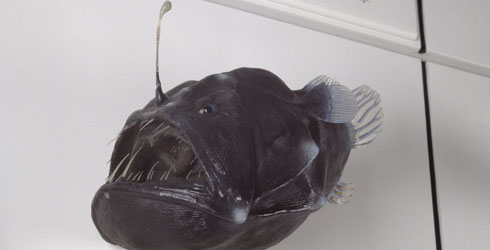
Deep sea angler or Black sea devil, Melanocoetus johnsoni
Depth: 250m - 2km
Females have big teeth and a light-sensor on a stalk between their eyes. Males are much smaller and have enormous nostrils they use to sniff out their mates in the dark.
Once a male finds a female, it attaches itself to the female's underside with its teeth. It remains there as a parasite, feeding from the female until it is needed to fertilise the eggs.
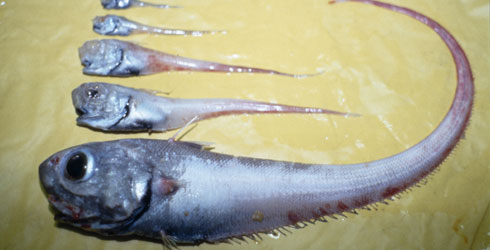
Rattails, Corphaenoides species
Depth: 22m - 2.2km
This fish normally lives in large shoals close to the seabed in the relatively shallow waters near the coast. It is highly sensitive to vibrations in the water that could be made by prey, like shrimps or small squid and fishes.
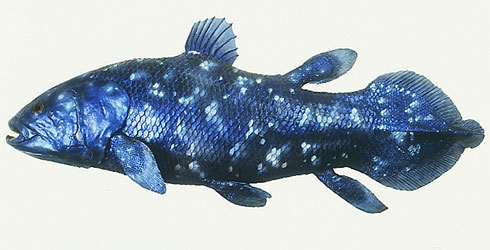
Coelacanth, Latimeria chalumnae
Depth: 150m - 400m
The coelacanth is the most famous living fossil. It was once thought to be a missing link between fishes and amphibians because of its leg-like lobed fins.
Small populations live in the Indian Ocean along the east coast of Africa and near Sulawesi in Indonesia. Although living coelacanths have only been known to science since 1938, local fishermen have been aware of them for a lot longer, but considered them worthless because of their unpleasant-tasting meat.
Related information
- Reptiles, amphibians and fishes
- Watch the video revealing the hairy anglerfish's last meal
- Fishes, Amphibians and Reptiles gallery
- Life in the sea
External links
Toolbox

Until 1938 whale carcasses were buried in the Museum grounds so that their flesh would decay leaving only the skeletons.
- Contact and enquiries
- Accessibility
- Site map
- Website terms of use
- © The Trustees of the Natural History Museum, London
- Information about cookies
- Mobile